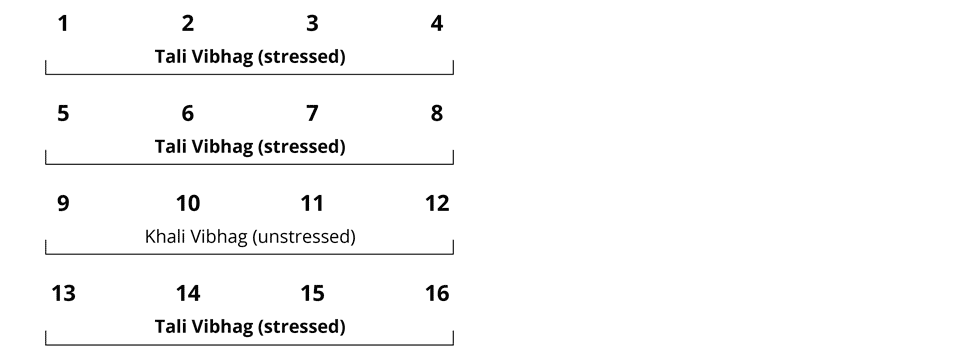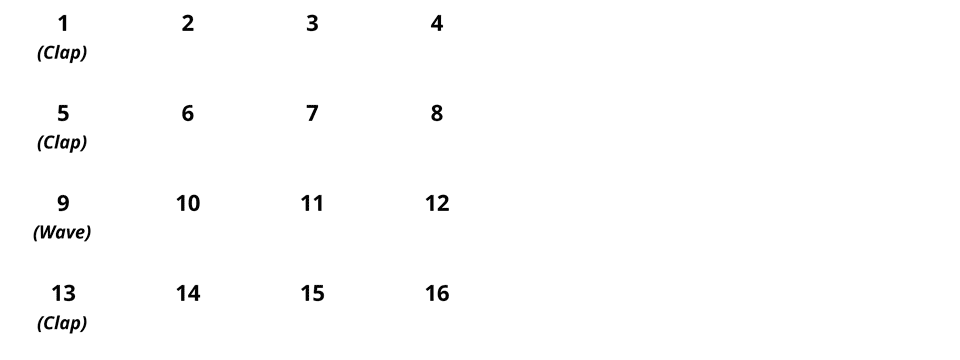Tintāl – तिनताल
- Beats: 16
- Divisions: 4 (stressed = 3, unstressed = 1)
- Structure: 4-4-4-4 (X-2-0-3)

Introduction to Tintal
Sometimes called the “master tal”, or the “king of tals”, tintal is by far the most common tal in classical tabla. It’s also the most important.
Most of the vast tabla repertoire has been composed in tintal. And tintal is the most common tal for both instrumental accompaniment and tabla solo.
With an even 4-4-4-4 structure, tintal is the most accessible tal for new students and listeners, after the light classical tals of kaharawa (4-4) and dadra (3-3).
For tabla students, tintal is where you will do most of your practice. Similarly for listeners, you should spend most of your time listening first to compositions, and then to performances, in tintal.
As with any tal, I recommend serious listeners learn the following about tintal:
- Learn tintal’s structure
- Learn to keep time for tintal
- Learn the follow the tintal theka, and a few theka variations
- Learn to follow a few lahra melodies for tintal
You can also see the Listener’s Guide for these and other recommendations.
Tintal Structure
Tintal has a structure of 4 vibhags (divisions) of 4 matras (beats) each (4–4–4–4), with a tali-khali pattern of tali-tali-khali-tali (stressed-stressed-unstressed-stressed):

In written form, the tintal vibhags are commonly marked X-2-0-3:
- X = sam and first tali vibhag
- 2 = second tali vibhag
- 0 = khali vibhag
- 3 = third tali vibhag

Tintal Timekeeping Pattern
The tintal vibhags are shown by the timekeeping pattern of clap-clap-wave-clap:

Tintal Timekeeping with Lahra
The video below shows the tintal timekeeping pattern with lahra, which is a kind of melodic timekeeping.